Specially written for Vikalp Sangam (based on draft made in Oct. 2013)
“Our education has got to be revolutionized. The brain must be educated through the hand. If I were a poet, I could write poetry on the possibilities of the five fingers. Why should you think that the mind is everything and the hands and feet nothing? Those who do not train their hands, who go through the ordinary rut of education, lack ’music’ in their life. All their faculties are not trained.” — Mahatma Gandhi, Discussion with Teacher Trainees, Harijan, 18 February, 1939
There isn’t an education system on the planet that teaches dance every day to children the way we teach them mathematics. Why? Why not? I think this is rather important. I think maths is very important but so is dance. Children dance all the time if they’re allowed to, we all do. We all have bodies, don’t we? Truthfully what happens is, as children grow up we start to educate them progressively from the waist up. And then we focus on their heads. And slightly to one side.— Ken Robinson , TED talk 2006
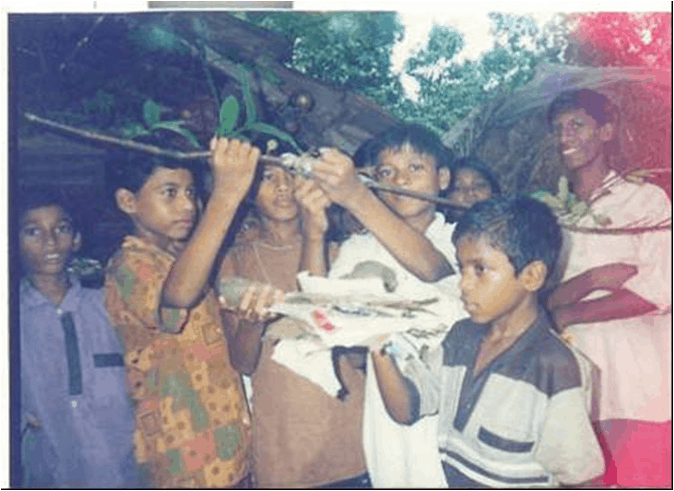
Learning Biology Through Productive work: The fruit kul (jujube, ber) grows all over India. The sour round red fruit is quite popular in Bengal especially during Saraswati Puja. But there is also a growing demand for the longish green sweet variety (mishtikul) . One can graft a branch of sweet kul onto a sour kul tree. In some villages of North 24 Parganas district an NGO Swanirvar, working in agriculture and school education, asked school children if they would learn to do this as there is a huge demand. The adolescents were hesitant initially as they thought it was too tough. But eventually, after a few failures, they learnt how to do it and went around partially fulfilling the local demand. Another NGO working in North Dinajpur district requested Swanirvar to send its staff to do this grafting in their district as local expertise was missing. So three staff went and did it in 20 odd tress. The next year the same demand came and again and “experts” from the southern district went to North Bengal to do it with about 30 trees. But it appeared that the demand was in lakhs! All students of classes VI to X study Botany. Isn’t it possible to learn many of the concepts of this subject through this activity of grafting of kul as well as for other fruits ? Won’t that learning be more solid? This will also be useful to the family and community, lead to more productivity and diversity, and could be a vocation for some of the children. It will be all round development of the child, as well as huge FUN. There are many districts of West Bengal (and many parts of India) where, for whatever reasons, these grafting skills are not in sufficient quantity. So why isn’t this part of school curriculum?
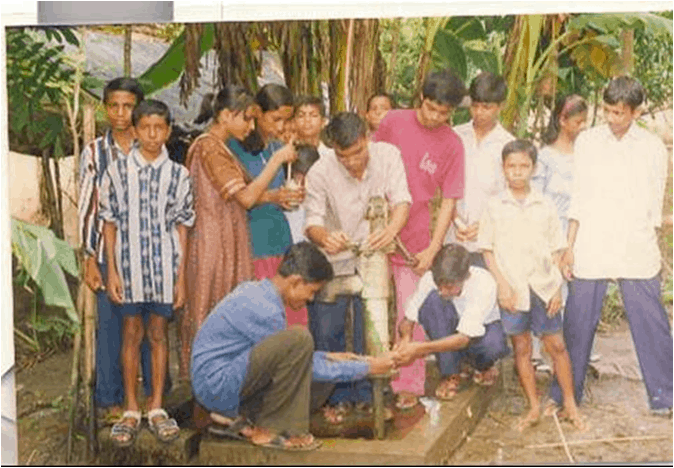
Disinfecting tubewell
Learning Everything Through Water related Work: In 1997, this same NGO Swanirvar started to do some work with school going children of classes VI to IX during their summer vacations. During workshops with these children diarrhea appeared to be a problem. Discussions led to the issue of water, the sources of drinking water. In this area one needs to dig only 20-40 feet to reach water, and so most houses have a hand pump. But since these are very shallow, there are high chances of contamination. One possible solution is to add bleaching powder into the hand pump at least during the peak contamination season. The children decided to first find out the situation of hand pumps. How many are there? How deep? When were they dug? Is it a plastic or iron pipe? Have there been any problems? What is the incidence of diarrhea? Armed with their questionnaires they did the survey; sat with the data; made tables, pie charts, bar diagrams. And then they were asked to do the “bleaching operation”. Since the opening of the head of the hand pump requires the use of wrench and pliers and appears tough, they were initially unsure of themselves. But then they formed into groups, informed the households that they should hold water the previous night and not use the pump for one whole day after bleaching . These groups went around the village with tools and bleaching powder and disinfected all the hand pumps. One can learn so much through this work — Physics, Chemistry, Biology, Maths , Geography, History. One has to use one’s imagination to see how the concepts of these subjects can be teased out of this activity. And this is an activity which simultaneously is of immense social use. Water borne diseases are one of India’s biggest problems.Whatever may be the source of drinking water in whichever part of India, one can design a “useful productive” activity for school & college students which will also serve as a tool to learn their “subjects”.
And these school children were learning to plan, learning to work together, learning to question and do problem solving. They were also taught a growing number of songs, folk dances from various parts of India, and bratachari (a form of small drill dances which has gone through phases of popularity in various parts of Bengal). So no village activity and workshop was without singing and dancing!!
|
What about in the cities? What could be such productive work? This author has been associated for the last two years with something called the “Wipro Earthian Award”. Schools and colleges from all over India participate by writing essays or some other kind of composition on a “sustainability” issue. And it is often on some work which they have done or the idea of work which could be done. There were excellent work projects with waste management in and around schools which included composting, setting up biogas plants, waste segregation, reusing, recycling of paper and plastics, involving parents , involving the local community , setting up collaborations with the neighboring market, with corporate houses, doing surveys of the city’s waste to help the local govt., etc. There are quite a few who have worked with urban lakes, doing fairly exhaustive studies of the problems and possibilities; of getting involved with local community, organizations, local govt. and trying to see what could be the solutions; and then actually getting involved in restoration work. There have been many working with electricity conservation; various solar devices, solar hybrids. There are projects on urban agriculture, urban biodiversity, public transport, looking at use and abuse of ground water, rainwater harvesting, etc.
Question is how to take these forward? Firstly these kind of activities are restricted to a small number of well endowed institutions (about 1000 which is insignificant for a country like India), and almost all private. Secondly, within these small number of institutions, these are done by a small number of students. Thirdly in almost all institutions these are special “projects” and do not form part of the curriculum. Therefore “education” goes on separately in the classrooms instead of “education through these works”. So while there is a silver lining, obviously a huge amount of work needs to be done at multiple levels — at school level, new kinds of text books and other materials, curriculum, teacher’s capacity building, changing of school structures and routines, exams, policy level, awareness of general people, etc.
What about exams ? Tough nut to crack
Marjorie Sykes wrote in “The Story of Nai Talim” about the final exam in Sevagram in 1949:
“In these schools it was possible to replace the old type annual “promotion examination” which determined whether children from the fourth grade were allowed to go on to a middle school, by an evaluation of a different type. All the fourth grade children from four or five villages within easy distance of one another were assembled for a week’s camp in the school in the central village, and lived together, as a little community. They brought with them from their homes their basic rations, interested people in the village supplied them with vegetables and milk, they organized their own cooking, cleaning and sanitation, etc., kept their records and accounts, wrote their diaries, and were tested for their skills in craft. Each school in the group also produced an activity for public entertainment on one night of the week, and these were attended by parents and others from every village involved. There were songs, dances, games, jokes, and little “skits” about village life; the only rule was that every child in the class must do something, they could not leave it to one or two “star” performers. The camps proved a most effective form of evaluation as well as an enjoyable one; soon the children of grade three were demanding that they too should have exams!!”
How do we do this in an urban school context today? Some examples from the experimental school SHIKSHAMITRA which ran in Chetla , Kolkata between 2005-2010
Geography exam: children had to actually take a stick and measure the distance from the school to the local ground in groups. The children protested that people on the road would be surprised and then would make fun of them. But eventually they did it and had a lot of fun themselves.
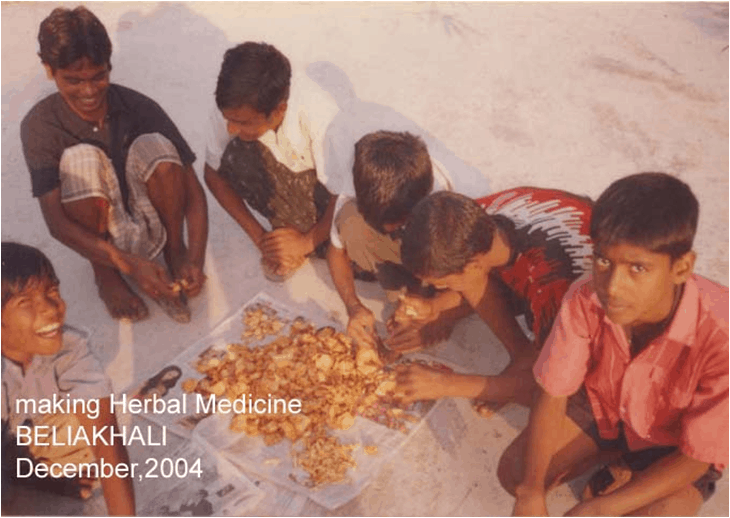
Making herbal medicine
Health exam asked each child to make ORS. And then they drank their own preparation.
Language exam had the children listen to the Kabir Sumon’s song “Banglar dhonu kerchhilay chhilay —“ and then they had to write 5 lines on what they understood. In another exam children had to put their feelings about a song on clay. Another class had the teacher reading out Tagore’s poem “BirPurush” (a small kid dreaming of extreme bravery and saving his mother single handed from many dacoits). The children heard the poem with rapt attention and enjoyment . Then they had to draw a picture on some theme from the poem and describe their drawing verbally. When describing, most of them “transferred” the story to their own “para or locality”! The children were also asked what they liked in the poem, why and which character they related to most.
Art exam each child was asked to think about their favorite song, hum it, and while humming draw a picture. One of the slow learners drew a beautiful picture where the song like a stream was flowing around everywhere. In some, the children mixed up two songs which clearly comes out in their drawing.
Science exam – each child was asked to think of one experiment which they had to demonstrate and to bring the ingredients themselves. This was quite fun and actually became a class rather than an exam where one child was helping the other! One child was very serious and came after practicing several times at home.
History : The children were asked that if their school burnt down and 50 years later someone came to buy the place and found some evidence that there used to be a school here – what could be these evidences? How else could one find out more about the school? One student said that she would then be an old ex student and people could ask her!
In another exam Portions of Modern Times the film was shown followed by questions and discussions.
For a dyslexic child, there was a special exam based on his village apprenticeship experience.
Cooking: The school had once-a-week Cooking class. For the exam the children discussed the difference between govt. school mid day meal and their own cooking class and wrote this down. They talked about different forms of cooking and what items have been cooked by that method. An item was selected for the exam : ruti – ghoogni – soyabean. The children were divided into four groups with leaders and each group had to do shopping, making bills, accounts, preparing the cooking utensils, cleaning, cutting, rolling of chapatis, cooking the vegetable, frying the chapatis, table decoration, serving, eating without wasting, cleaning, washing of napkins and utensils . Three mothers came as “judges” and were totally taken aback at the energy and organization. One boy’s mother jokingly asked him to cook the family dinner for the day!
Notice that in the exams
- Singing – drawing –painting is often part of many subjects
- Children are allowed to express in various ways what they want to convey
- There is almost no memorizing of facts or “right” definitions and answers.
- Even within one grade, several level of question papers were made according to the children’s abilities
- For many questions there is no single right answer — which is the dominant mode of exam questions for schools all over India.
Dhai Akshar Prem Ka
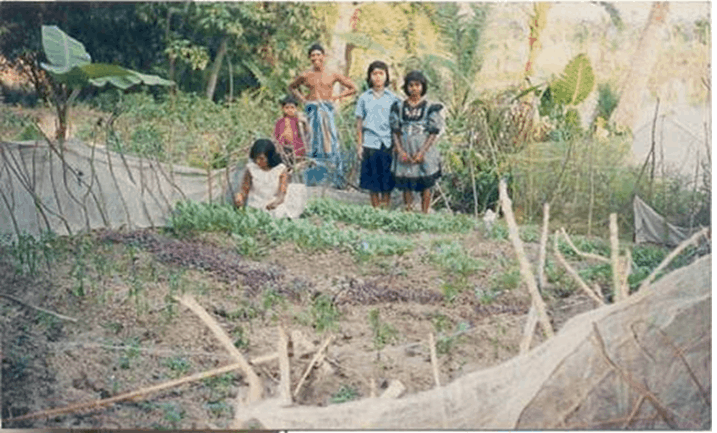
Vegetable Nursery
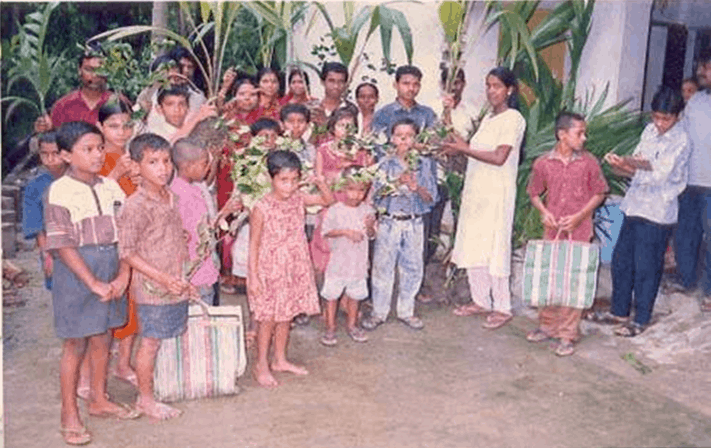
Distributing seedlings from own nursery
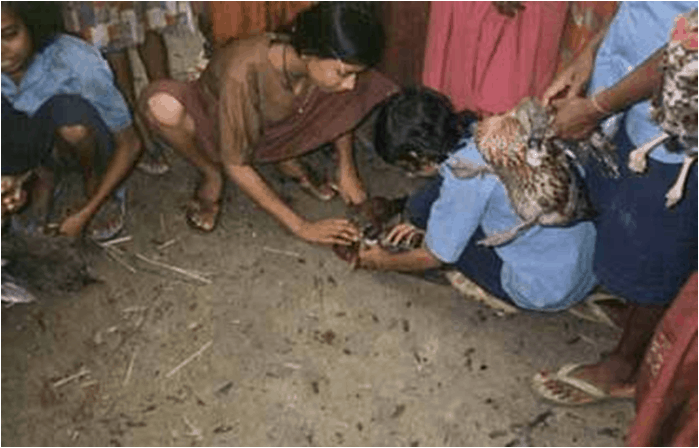
Vaccinating country chicken
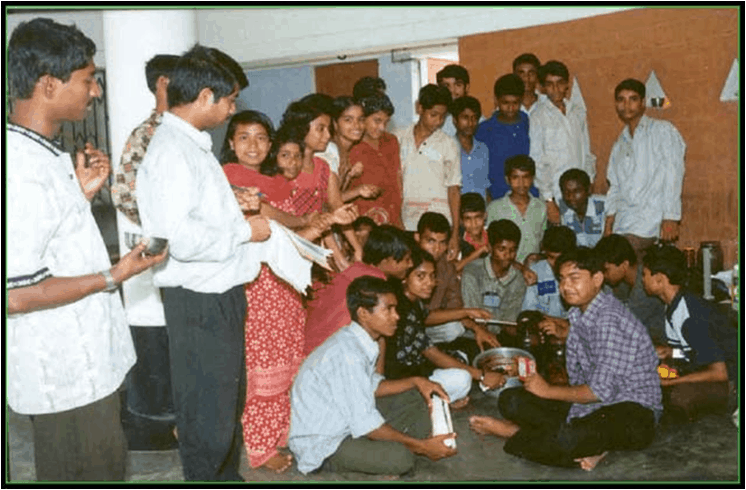
Food Processing training
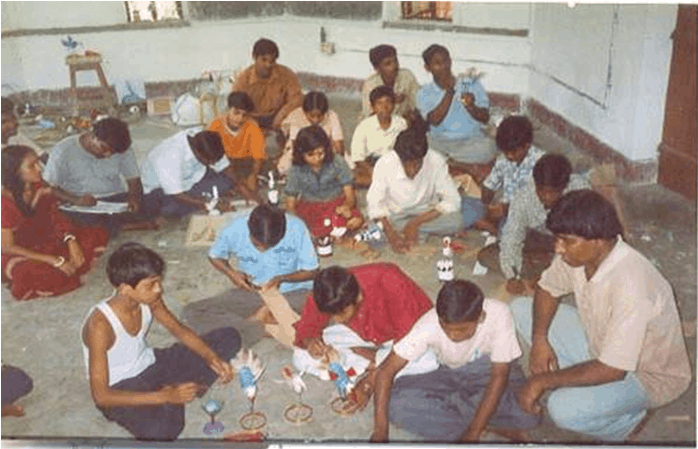
Making toys from waste material
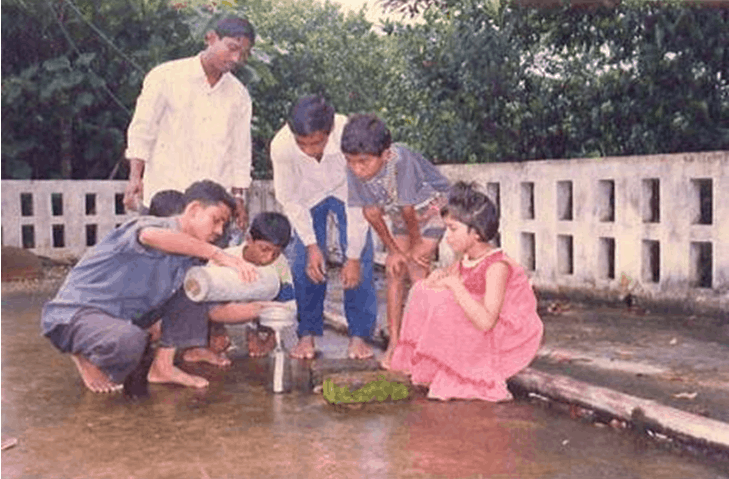
Measuring Rainfall
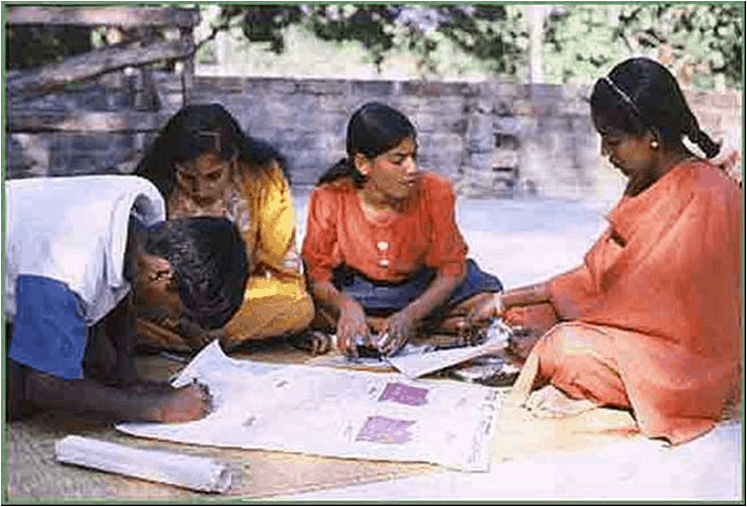
Making Temperature & Rainfall graphs
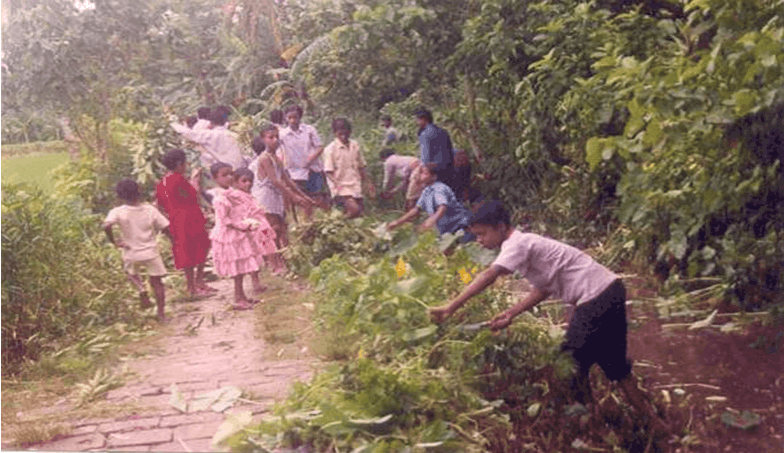
Road Cleaning
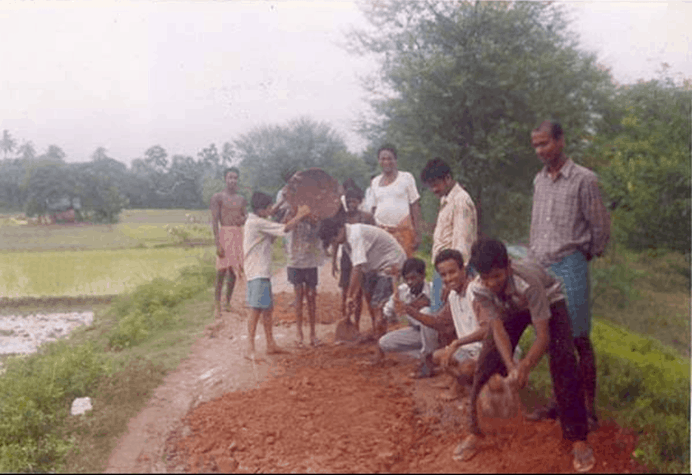
Road Repairing
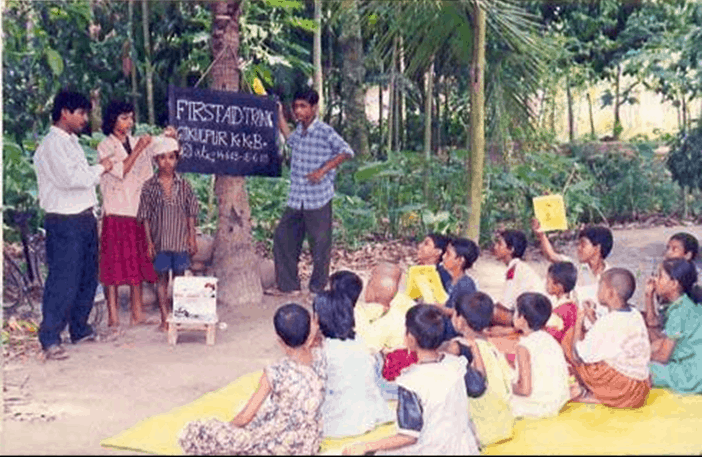
First Aid Training by Senior Youth
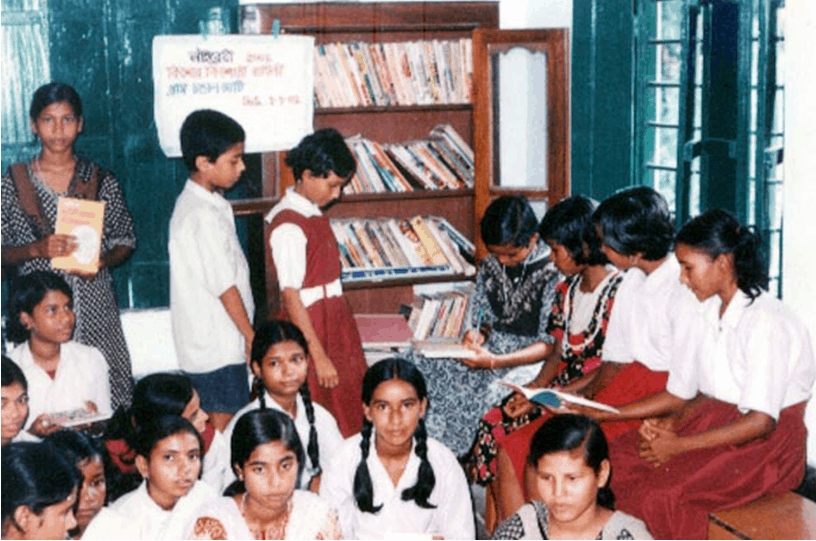
Running Own Library
I will end this essay with this quote by Narayan Desai from his book “My Gandhi” where he brings in the classic Tagorean concerns without which Nayee Taleem is incomplete.
“The Zakir Husain Committee while explaining Gandhi’s idea of Nayee Taleem mentioned (a) some productive activity (b) nature and (c) community work as the three media through which education should be imparted in the Nayee Taleem school. I found them to be sound principles that can encompass practically the whole of the universe for the pupils. But these three appear to be the exterior media of education to me. There are other media which touch the heart of Nayee Taleem, or Gandhian education. They are (d) love, (e) freedom and (f) self expression. While the former three provide the exterior media which could be useful for education, they would probably be meaningless without the latter three. If the aim of education is to develop the latent qualities in the pupils and the final aim is to produce responsible citizens for a non-violent, that is non-exploitative and non-divisive society, we will need something much more subtle and penetrating to develop the inner qualities of the pupil.”
…
Contact the author